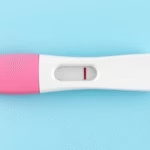Understanding Implantation Bleeding and Menstrual Periods
Recognizing the difference between implantation bleeding and a typical menstrual period is essential for women, particularly those trying to conceive or monitoring their reproductive health. Implantation bleeding occurs when a fertilized egg attaches to the lining of the uterus. This often results in light spotting that may be mistaken for a menstrual cycle.
In contrast, a menstrual period is the shedding of the uterine lining when pregnancy does not occur. It is usually heavier and lasts anywhere from three to seven days. Recognizing these differences adds to reproductive health knowledge and can assist in determining pregnancy status. Both conditions also exhibit variations in color, flow, and timing, which we will explore further in the following sections.
Characteristics of Implantation Bleeding
Implantation bleeding is typically lighter and shorter than a regular menstrual period. Here are its defining characteristics:
- Timing: It usually occurs around six to twelve days after conception, close to the time of a missed period.
- Color: The bleeding may vary from light pink to dark brown.
- Flow: It is generally very light, possibly just a few spots or a small amount of discharge.
- Duration: Implantation bleeding can last only a few hours to a couple of days.
- Associated Symptoms: Mild cramping may occur, but it is usually not accompanied by other menstrual symptoms.
The lighter flow and shorter duration are significant markers differentiating it from a menstrual period.
Features of a Menstrual Period
Understanding a typical menstrual period is crucial in differentiating it from implantation bleeding. Key features include:
- Timing: A woman’s period generally occurs every 21 to 35 days and lasts about 3 to 7 days.
- Color and Texture: The blood can be bright red, dark red, or brown, often increasing in intensity through the first few days.
- Flow: Menstrual flow generally starts light, becomes heavier, and may taper toward the end.
- Associated Symptoms: It can be accompanied by symptoms like cramps, breast tenderness, and mood swings.
These characteristics help women determine if they are experiencing a normal menstrual cycle or something else, such as potential implantation bleeding.
Testing for Pregnancy
If there is uncertainty about whether one is experiencing implantation bleeding or a period, pregnancy tests can be a useful tool. Home pregnancy tests are designed to detect the hormone hCG, produced shortly after implantation. For more accuracy, it’s advisable to take the test after the missed period. Waiting allows for higher hCG levels, leading to more reliable results.
Blood tests conducted by healthcare providers can also confirm pregnancy earlier, providing both qualitative and quantitative results, which determine how far along the pregnancy may be.
Physical Symptoms: Similarities and Differences
Both implantation bleeding and menstrual periods can come with physical symptoms, yet they differ importantly:
- Implantation bleeding may have mild cramping, while menstrual cramps can be more intense.
- Nausea and tender breasts can be present in early pregnancy but are not typical in menstruation.
- Menstrual symptoms like mood swings and bloating are more pronounced during a period.
Awareness of these symptoms can provide critical insights when trying to distinguish between the two experiences.
Timing and Cycle Regularity
Understanding your menstrual cycle is integral to identifying any irregularities or changes. Implantation bleeding typically occurs a week or so before your expected period. If your cycle is usually regular, a sudden change can suggest pregnancy if accompanied by light spotting.
Women with irregular cycles may find it more challenging to differentiate these two, as both irregular periods and implantation bleeding can manifest as unexpected spotting. Keeping a cycle diary can aid in recognizing these patterns.
Color and Flow Analysis
The color and flow of bleeding can provide clues. Most menstrual bleeding starts with a bright red color and can transition to a darker hue over the period’s duration. Implantation bleeding is often a lighter color, ranging from pink to brown. The flow is less intense, ensuring that it is not mistaken for a typical period.
For women monitoring their reproductive health, tracking changes in color and flow can become a valuable practice in distinguishing between these two types of bleeding.
Consulting with Healthcare Professionals
If uncertainty persists, it is advisable to consult with a healthcare professional. They can provide insights, conduct the necessary tests, and offer necessary guidance for women trying to conceive or manage their reproductive health.
Regular gynecological check-ups are beneficial in ensuring that all aspects of menstrual health are adequately monitored and addressed.
Final Thoughts
Understanding the differences between implantation bleeding and a menstrual period is vital for women. Recognizing each symptom, including timing, flow, color, and associated characteristics, serves as a guide to distinguishing between the two experiences. Implantation bleeding appears lighter and often shorter in duration, occurring around the time of a missed period, while menstrual bleeding is generally heavier and longer lasting.
Pregnancy testing is an effective way to confirm or rule out pregnancy when faced with uncertainty. Additionally, observing physical symptoms can further aid in determining the status of one’s reproductive health. For those experiencing irregular cycles, keeping a diary or charting patterns can help distinguish between a typical period and potential implantation bleeding.
If in doubt, always seek advice from healthcare professionals. They can provide guidance tailored to individual health needs. Through education and vigilance, women can navigate the complexities of their menstrual health more effectively.
Frequently Asked Questions
- What is implantation bleeding?
Implantation bleeding is light spotting that occurs when a fertilized egg attaches to the uterine lining, usually around six to twelve days post-conception. - How can I differentiate it from my period?
Implantation bleeding is generally lighter, shorter, and has a different color compared to menstrual bleeding. It may last only a few hours to a couple of days. - When does implantation bleeding occur?
It typically occurs a week before a missed period, around the time you would expect your period. - Can I take a pregnancy test during implantation bleeding?
For accurate results, it’s best to wait a few days after a missed period to allow hCG levels to rise. - What should I do if I am unsure?
Consulting a healthcare professional is the best course of action if you have concerns about your bleeding or potential pregnancy.
Further Reading
What Type of Psychotherapy Is Best for Anxiety?







